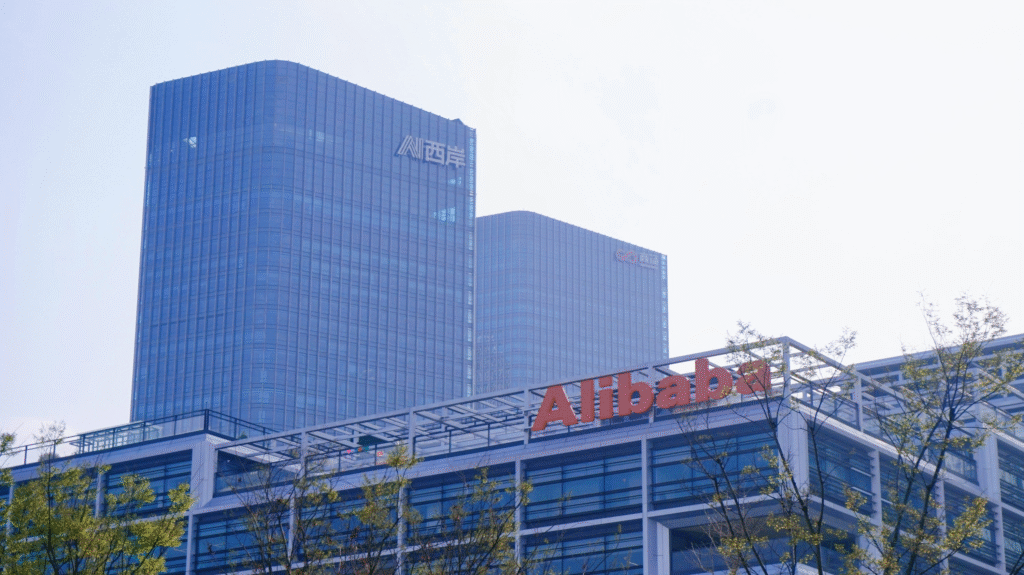“Technology is only powerful when people find real value in it.” This thought captures what many are noticing about the journey of Chinese tech giant Alibaba. The company, like many others in China, has spent billions of dollars in the last three years on artificial intelligence (AI). Yet, the financial results it is about to report may not show big rewards from this effort. Instead, Alibaba’s story is becoming one about patience, experiments, and the slow road of turning exciting new technology into real money.
Alibaba’s upcoming quarterly results on Friday are expected to shine a light on its AI strategy. The company has been very active in this field, pushing new models, apps, and tools almost every week. It wants the world to see that it is not behind when it comes to AI. However, analysts believe that while Alibaba has made progress, it may face the same problem that Tencent and Baidu are also struggling with—converting AI buzz into solid earnings.
The main challenge is not about building the technology itself. Alibaba has launched its own large language models, similar to ChatGPT, and has woven them into many of its products. From e-commerce tools to cloud services, AI is present everywhere. But building is one thing, and earning from it is another. Unlike in the West, where many customers are willing to pay for AI subscriptions, Chinese users have shown strong resistance to subscription fees. This cultural difference makes it harder for companies like Alibaba to build steady revenue from AI.
Alibaba’s cloud division is one area where AI was expected to make a difference. Experts predict that this part of the company may show around 4.3% growth quarter-on-quarter. While this is some improvement, it is still limited compared to the billions invested. Cloud services in China are also stuck in a price war, as companies keep lowering fees to attract clients. This means Alibaba is earning less from each customer even while spending more on innovation. Such a combination puts pressure on profits and slows down the financial benefits of AI.

The company is also facing another big hurdle—competition in its home turf of online shopping. Alibaba’s core e-commerce business, which has always been its backbone, is locked in fierce price battles. Rivals are cutting prices aggressively, hoping to grab more buyers. In such a tough environment, even loyal shoppers are being careful with spending because of China’s wider economic weakness. People are thinking twice before making purchases, and this affects Alibaba directly.
What makes Alibaba’s case interesting is its aggressive approach. Unlike some of its peers, the company has tried to be at the front of every new AI wave. It has shown updates and demos frequently, signaling that it wants to be seen as the leader of China’s AI movement. However, showing progress and making money are two very different goals. Many of its announcements, while exciting, are yet to add much to the company’s financial strength.
“Sometimes technology runs faster than the market,” a tech observer explained recently. This seems to describe Alibaba’s situation well. The company has the tools, but the customers are not yet ready to pay in ways that make the investment worth it. People in China, unlike in many Western countries, do not easily accept subscription models. They prefer free access or cheaper alternatives. This cultural factor means that Alibaba’s AI journey will likely be slower in showing visible profits.
Another difficulty lies in the broader economic mood in China. With growth slowing and consumers spending less, even the best new technology struggles to create immediate demand. People are more cautious about new costs, and businesses are also trying to cut down on expenses. This makes it harder for AI to appear as the big money-maker it was promised to be.
At the same time, Alibaba cannot simply stop investing. If it slows down, it risks falling behind global competitors who are moving fast in AI. For instance, Western companies have already built a steady stream of income through subscriptions, business tools, and partnerships. If Alibaba waits, it could lose its spot in the global tech race. So, the company continues to spend, hoping that the Chinese market will eventually catch up with the technology.
Interestingly, this moment for Alibaba also raises a bigger question—how should we measure success in technology? Is it about short-term profits, or is it about long-term positioning? For a company like Alibaba, which is already huge and well-known, being a key player in AI may matter more right now than quick money. It is like planting seeds in a field. The plants may not grow fast, but if the seeds are strong, the future harvest could be worth the wait.
For Chinese tech firms, this issue is not just about AI. It is about changing habits and teaching people new ways to use services. Convincing users to pay regularly, even in small amounts, is a cultural shift that may take time. Companies like Alibaba are now not only building technology but also shaping consumer behavior. This dual challenge makes the road longer, but perhaps more rewarding if they succeed.
Alibaba’s quarterly results may therefore tell a story of limited financial growth from AI, but they also reveal persistence. The company is not giving up. Each model it releases, each update it announces, is a step toward building a future where AI might finally become a normal part of everyday spending in China. For now, the numbers may not look very impressive. But the efforts show a vision—a belief that someday, AI will not just be a buzzword but a major driver of growth.
“Real change often takes longer than we think,” another industry expert noted. Alibaba’s journey proves this once again. Its AI story is not about overnight success, but about steady effort, cultural adjustments, and the hope that patience will eventually pay off. The road is slow, but the destination may still hold promise.


